Anti-leishmanial effect of the hydroalcoholic extract of the leaves, roots and seeds of Arctium lappa
- PMID: 40292263
- PMCID: PMC12033021
- DOI: 10.22038/AJP.2024.24940
Anti-leishmanial effect of the hydroalcoholic extract of the leaves, roots and seeds of Arctium lappa
Abstract
Objective: Zoonotic cutaneous leishmaniasis is a common including endemic infectious disease in many parts of the world and Iran. Due to Arctium lappa wide therapeutic applications, the anti-leishmanial effect of the hydroalcoholic extract of its leaves (L), roots (R) and seeds (S) has been investigated in this research.
Materials and methods: The leaves, seeds and roots of the greater burdock plant were extracted. In the in vitro phase, its cytotoxic and anti-leishmanial effects on promastigote and amastigote forms of Leishmania major(L.major) were investigated. In the in vivo stage, the leishmaniasis mouse model was dosed with concentrations of 50, 100, and 200 mg/kg and the liver and spleen parasite burden was checked.
Results: The results of this research in the in vitro phase showed that the antileishmanial effect of the hydroalcoholic extract of leaves, roots and seeds on the promastigote and amastigote forms of L. major has a significant relationship with the increase in the concentration of the extract (for all p≤0.001). Also, exposure time and interaction effect of concentration and exposure time were significant. In the in vivo phase the significant effect of the increase in concentration (L: p≤0.001, R: p=0.02, S: p=0.03), exposure time (L: p≤0.001, R: p≤0.001, S: p≤0.01) and the interaction effect of these two factors (L: p=0.002, R: p≤0.001, S: p≤0.001) on reducing the size of the wound was shown.
Conclusion: The investigation established that hydroalcoholic extract of the leaves, roots, and seeds of the greater burdock in high concentration exhibited beneficial inhibitory effects on the leishmanial lesions.
Keywords: Anti-leishmanial; Arctium Lappa; BALB/c mice; Glucantime; MTT.
Conflict of interest statement
The authors have declared that there is no conflict of interest.
Figures
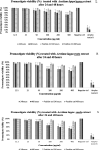
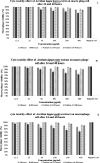
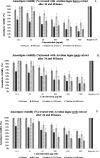
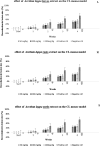
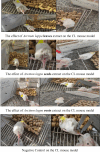
Similar articles
-
Evaluation of the Anti-Leishmanial Activity of the Hydroalcoholic Extract of Green Algae (Spirogyra): Investigation of Weight Indicators (Lesion Size and Organ Weights) in BALB/c Mice.Acta Parasitol. 2025 Feb 7;70(1):51. doi: 10.1007/s11686-025-00994-4. Acta Parasitol. 2025. PMID: 39918617
-
The Efficacy of Hydroalcoholic Extracts of Prosopis farcta Against Leishmania major.Turkiye Parazitol Derg. 2021 Mar 2;45(1):1-4. doi: 10.4274/tpd.galenos.2020.6956. Turkiye Parazitol Derg. 2021. PMID: 33685060 English.
-
In vitro anti-leishmanial activity of methanolic extracts of Calendula officinalis flowers, Datura stramonium seeds, and Salvia officinalis leaves.Chin J Nat Med. 2014 Jun;12(6):423-7. doi: 10.1016/S1875-5364(14)60066-2. Chin J Nat Med. 2014. PMID: 24969522
-
Arctium lappa (Burdock): Insights from ethnopharmacology potential, chemical constituents, clinical studies, pharmacological utility and nanomedicine.Biomed Pharmacother. 2023 Feb;158:114104. doi: 10.1016/j.biopha.2022.114104. Epub 2022 Dec 12. Biomed Pharmacother. 2023. PMID: 36516694 Review.
-
A review of the pharmacological effects of Arctium lappa (burdock).Inflammopharmacology. 2011 Oct;19(5):245-54. doi: 10.1007/s10787-010-0062-4. Epub 2010 Oct 28. Inflammopharmacology. 2011. PMID: 20981575 Review.
References
-
- Akbari S, Chabavizadeh J, Abtahi SM, Yegdaneh A, Namdar F, Saberi S. Evaluation of antileishmanial effect of hydroalcoholic extract of Ganoderma Leucidum on Leishmania major in vitro. Journal of Isfahan Medical School. 2019;36:1628–1634.
-
- Almoradie AM, Angeles RJ, Beltran EV, Ugali M, Valles NS, Los Banos ZD, Mahboob T, Barusrux S, Nissapatorn V. Cryptosporicidal activity of plant extracts against Cryptosporidium parvum and Cryptosporidium hominis. Asian J Pharmacogn. 2018;2:22–31.
-
- Alson SG, Jansen O, Cieckiewicz E, Rakotoarimanana H, Rafatro H, Degotte G, Francotte P, Frederich M. In-vitro and in-vivo antimalarial activity of caffeic acid and some of its derivatives. J Pharm Pharmacol. 2018;70:1349–1356. - PubMed
-
- Aronson N, Herwaldt BL, Libman M, Pearson R, Lopez-Velez R, Weina P, Carvalho E, Ephros M, Jeronimo S, Magill A. Diagnosis and treatment of Leishmaniasis: Clinical practice guidelines by the Infectious Diseases Society of America (IDSA) and the American Society of Tropical Medicine and Hygiene (ASTMH) Am J Trop Med Hyg. 2017;96:24–45. - PMC - PubMed
LinkOut - more resources
Full Text Sources
